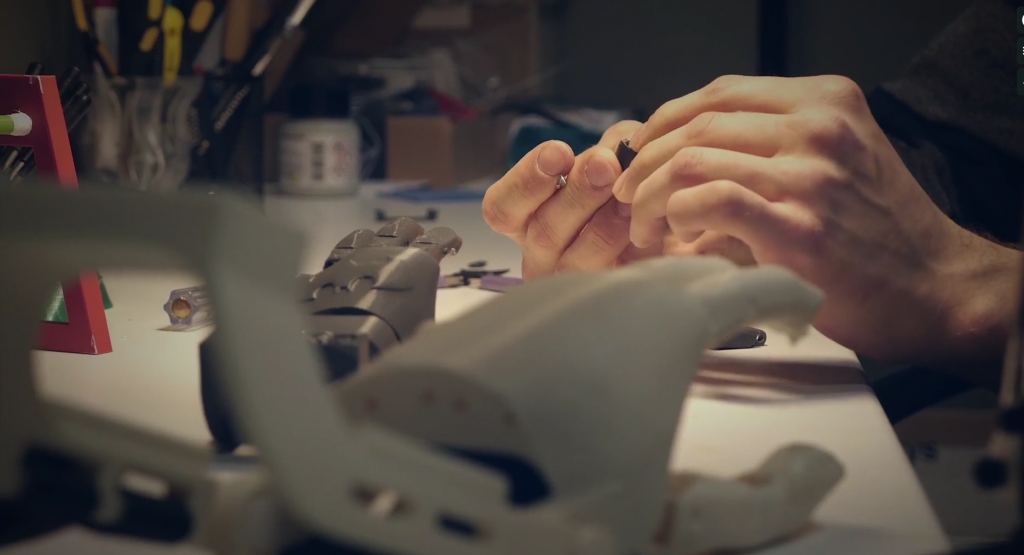This is a guest post in our series looking at the future of 3D Printing. To celebrate 5 years of reporting on the 3D printing industry, we’ve invited industry leaders and 3D printing experts to give us their perspective and predictions for the next 5 years and insight into trends in additive manufacturing.
Software startup company WiDE was founded in Latvia by Janis Jatnieks in 2015. WiDE software is set up to provide an easy solution for making alterations and adjustments to the size of 3D printable prosthesis and orthoses models.
The aim of prosthetic and orthotic devices
The real drive for most prosthetic and orthotic specialists is to help as many people as possible. The hard truth is that it is not easy neither with traditional methods, nor with additive manufacturing. Scalability is certainly not something that has been characterizing the industry.
Take into account the core problems with software; the lack of 3D modelling knowledge, hard to use software solutions and long process-chains. To this add expensive 3D scanners and unreliable 3D printers into the mix and one can easily see why specialists are slow to adopt the “additive mindset”. However several factors are changing rapidly and changes are promising.

Hardware improvements
Firstly, more easy to use and reliable 3D printers arrive in the market – even such that are specifically made for production of assistive devices, e.g. Create O & P. This means that more than ever prosthetic components and prosthetics themselves will be manufactured within prosthetic centers.
Secondly, 3D scanners are becoming not only cheaper but way more accessible than ever. Microsoft just announced a new 3D scanning app that has potential to be in every future smartphone. Estimates vary, but by year 2020 there might be more than 5 billion smart-phones around the globe. In most cases 3D scan quality of a smartphone would be enough for creating simple assistive devices. That will significantly improve the speed of taking measurements from the patients and also make scanning available for most parts of the globe.
The missing link
Finally, if we are covered for 3D scans and additive manufacturing equipment, all that is left is software, that effectively links the two together. This is the space with the biggest potential for improvements. WiDE is among the few that is tackling this issue and with the focus on achieving high throughput. Already now we are able to process single cases in less than 15 minutes and will decrease this down to just few minutes per case. But more importantly, also keep it so simple that specialists without specific training can be enjoying the benefits.
The future looks promising for those specialists who will adopt the technology early, as it is most likely that there will be 3D printers in most prosthetic centers, but some of them will already have 5 years experience in using them. We will see more lightweight and aesthetically pleasing devices and they will become commonplace and will be made in workshops with digital manufacturing capabilities.

We will see patients feelings, and fears battled with the help of creative and involving designs that are smartly tailored to fit patients and that also adhere to their lifestyles and daily activities. The future assistive devices will look stylish, they will catch an eye and make the wearer feel empowered to face the world and challenge their disability. It is likely that future assistive device users will have several units where one will be fitted to the dress worn to an Opera, but others made for school and even for doing household chores.
Local and remote access
For the specialists new horizons will open up. Currently the largest market for assistive devices is USA, serving only 2 out of 3 patients, which leaves a huge amount of people that still could be helped. Globally there is shortage of about 40,000 specialists and it is not a problem education system can fix. The ones employing 3D technologies and smart software will be able to serve more people not only locally, but also remotely.
It is possible that in few years time people in less developed regions will be helped from far away by processing their prosthetic designs in far away places, just to be printed on the closest available 3D printer. Our work towards this goal is not in the lines of code we can write to optimize yet another software solution, but in the collective change of mindset and readiness to learn anew that has not been changed for ages.
This is a guest post in our series looking at the future of 3D Printing, if you’d like to participate in this series then contact us for more information. For more insights into the 3D printing industry, sign up to our free newsletter and follow our active social media channels.
More information about WiDE is available here.
Don’t forget that you can vote now in the 1st annual 3D Printing Industry Awards.
Click here to read other articles in our thought leadership series, 3D Printing: The Next Five Years.
Featured image shows 3D printed hands designed by WiDE. All photos featured in this article are via Fricis Pirtnieks


